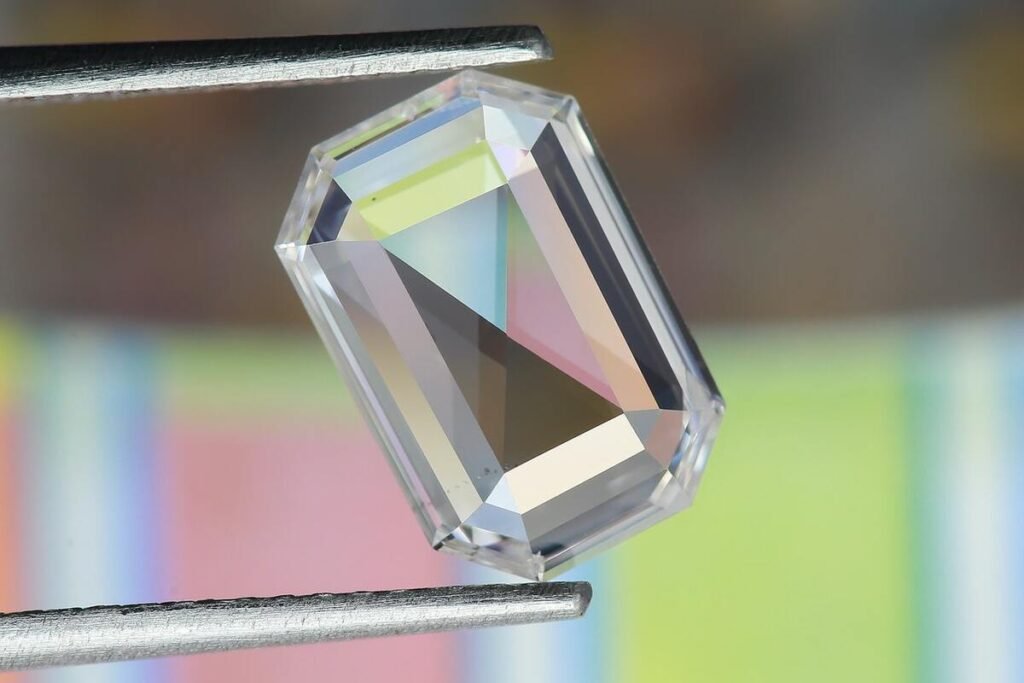Round may be the most adored and bought diamond shapes in the market. However, if you are looking to get a unique shape that can evoke either a timeless or a modern vibe, then it might be a choice of radiant cut vs emerald cut diamonds.
Emerald Cut vs. Radiant Cut Diamonds
Fancy-cut diamonds, which usually deviate from the round cut, can offer a different look. Plus, if you want a rarer cut for a good price, then these two options will definitely be good contenders on your list.
Learn more about the radiant cut and emerald cut diamonds. It may be a close fight when choosing which can be the perfect center stone for your partner’s engagement ring.
The Emerald And the Radiant: About The Two Shapes
When it comes to fancy-shaped diamonds with cornered styles, it’s an easy choice between the emerald cut and the radiant cut diamond. For some jewelry buyers, it’s hard to pinpoint the difference, especially when you are already in the store shopping. This may be because of their similar shapes.
On closer inspection, the two diamond cuts have minute differences that lie in the details. Get to know some of the qualities of these two diamond shapes.
Emerald cut: A rare classic
This style is as old as time, dating back to the 1500s because of its durability as a cut. It got its name in the 1920s, going with the fast rise of the Art Deco movement, which is mimicked in its lines and geometric look.
The emerald cut diamond holds quite an appeal that A-stars have been seen flaunting them. From Angelina Jolie’s 16-carat to Elizabeth Taylor’s 29.4-carat “ice skating rink” ring, the emerald cut’s subdued elegance makes it a favorite classic. It’s no wonder emerald cut engagement rings are very popular.
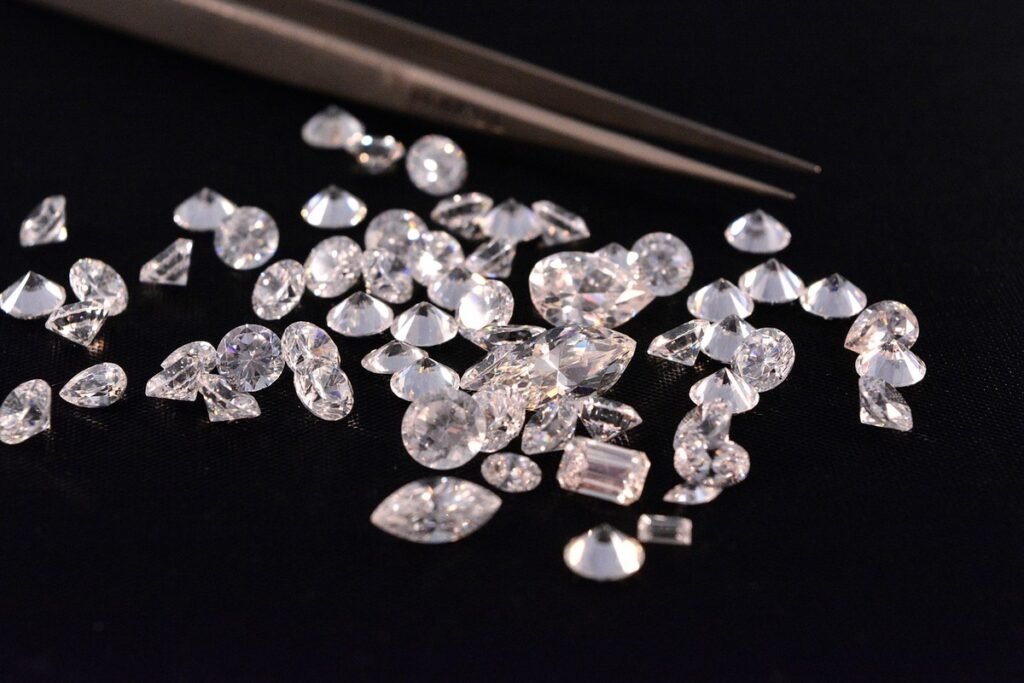
Radiant cut: Adding glamor to the fancy shape
Considered as one of the newer diamond cuts, the radiant cut diamond combines the brilliance of a round cut and the shape of an emerald cut. At first glance, it seems like the more brilliant and sparkly cousin of the emerald cut. Hence, one can say that its name is quite fitting.
In some cases, the radiant cut diamond can have a square shape, though jewelry buyers should expect a less radiant appearance. This is due to only 70 facets cut in the stone. It shares the same cut corners style as the emerald cut, which sometimes looks more full-bodied when cut into a squarer shape.
Most well-known and preferred radiant cut diamonds have a more elongated rectangular shape. Even with this angled shape, the dulled corners lessen the risk of chipping and catching. This is why, after the emerald, the radiant cut diamond often finds itself the center stone for engagement rings. A lot of jewelry buyers tend to prefer this cut to fit their active lifestyle as it requires lesser maintenance without the everyday worry or threat of chipping. This also makes the radiant cut engagement ring ideal for active people.
Other similar cuts that matter
Square or rectangular stones are not uncommon, but the styles tend to blend in due to their similarities. For instance, the Princess Cut diamond, another staple favorite, has a similar shape. It has sharp edges to create a square finish. This gives it one disadvantage that both emerald and radiant cut diamonds have solved, which is chipping.
The cushion cut may be a near relative, due to its rounded corners. It merges the shape of a round and a square diamond more seamlessly to get a squarish rounded-edge finish. This makes it perfect to be set either as a single stone or in a halo setting to set it off with other colored or brilliant stones.
Overlaps: Why Both Are Clearly Choice Cuts
Even with the differences in look, the emerald cut and the radiant cut share a basic similarity. This is their durability, as both cuts have cropped corners that eliminate chipping issues by a good degree.
If you ever wondered, “Are radiant cut diamonds good?” then you would know that its durability stands up to a common favorite, which is the Princess Cut diamond. Cut corners lessen the chances of chipping, especially if the diamond has more inclusions near the corners.
Going into the nuances of the stones’ details, buyers tend to look out for these six aspects. These differences can make an impact, especially if you have a particular style or feel that you want for your fine jewelry.
Facets
The emerald cut diamond follows a step cut, which creates a hall of mirrors effect on the surface of the diamond. This kind of facet creates a more subdued sparkle, far from the scintillation and brilliance of the typical diamond cut. For most jewelry enthusiasts, this is the very reason for the emerald cut’s appeal.
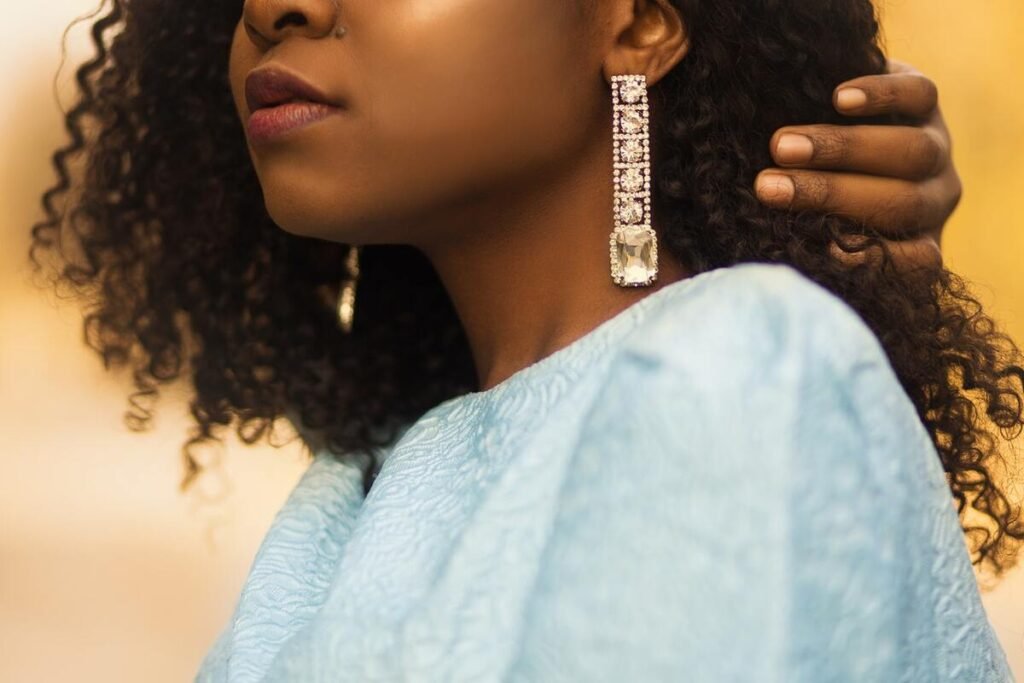
This appeal can come with a cost. The lack of brilliance and the size of the facets require higher clarity diamonds. Otherwise, inclusions in the diamonds will become visible to the naked eye, regardless of the craftsmanship of the cut.
When it comes to the radiant cut, the facets stand out as its main difference from the emerald cut. Radiant cut diamonds have brilliant facets, which creates the striking brilliance across its emerald cut-shaped form. Some radiant cut diamonds tend to follow a rectangular shape facet, whereas others have a more kite-shaped facet cut. Both of these are patterned on the diamond’s crown and pavilion, creating a sparkle that can be more overpowering compared to the emerald cut’s subdued brilliance.
Brilliance
If it were a matter of more brilliance, the radiant cut diamond wins this round. Its cut was meant to enhance this aspect of the diamond. On the other hand, the emerald cut diamond has a sparkle that is more suited to minimalist elegance.
More than the sparkle, however, the step-effect dazzles the eye in a different manner. This is because the emerald cut diamond flaunts another aspect, one that makes the stone more expensive and thus rarer to get.
Clarity
For those who understand how the 4Cs of jewelry shopping work, clarity refers to the visibility and presence of flaws and inclusions in the diamond. The higher the clarity rating, the clearer and the fewer inclusions there are as seen by the naked eye.
High-grade clear diamonds tend to fetch a higher price. But one trick to go around this hurdle is to utilize a brilliant cut. This tends to hide the inclusions more while still giving you a perfectly sparkling diamond.
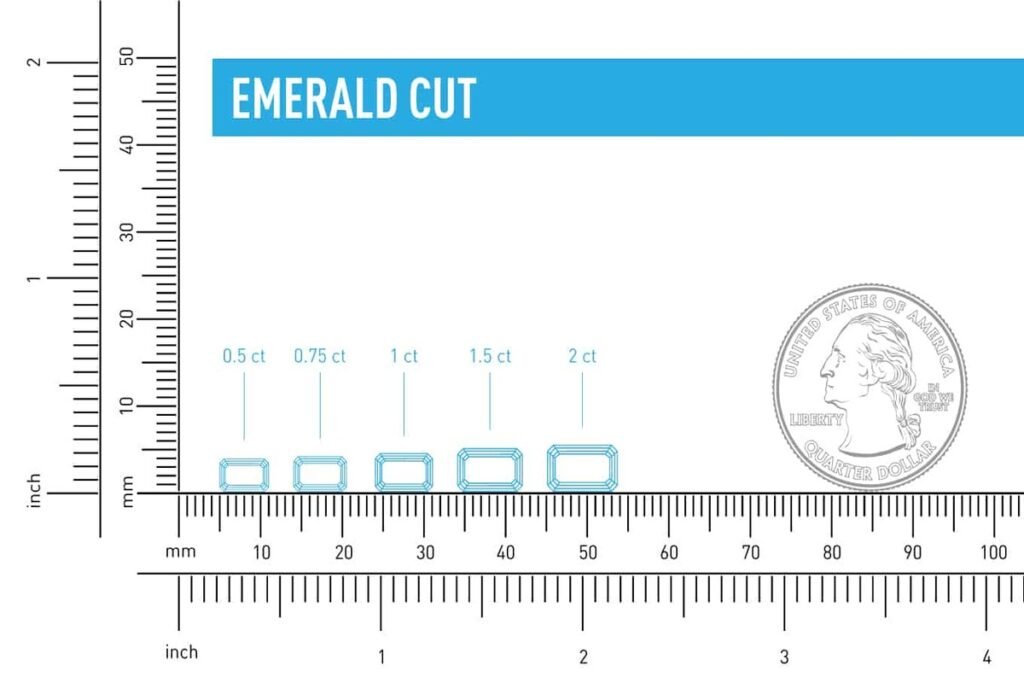
Cut
Both emerald and radiant cut diamonds can have a wide range of shapes. You can commonly find rectangular-shaped diamonds in this cut in the market. This is perfect for those who want to have a diamond that appears larger than their carat size.
Square-shaped emerald and brilliant cuts tend to have better options and varieties for the setting. Halo settings with square emerald or brilliant cuts are slowly taking the market due to its modern look.
Setting
This always comes down to a matter of personal preference. Rings nowadays tend to follow what the owner will prefer, so long as issues like chipping and stability are addressed.
Both emerald and radiant cut diamonds already have fewer chances of chipping due to the shape. To better improve on this, some settings like the solitaire and halo tend to emphasize the design without endangering the stability of the center stone.

In some cases, the emerald cut can also be set surrounding a band for a unique take. Check out this wedding band review that makes use of emerald cut diamonds.
Price point
When comparing the two cuts, it’s often said that budget-constrained buyers prefer the radiant cut diamonds. For those who want to own one of the rarer cuts, then the emerald cut will always be the first option.
If you are wondering, “Why are radiant cut diamonds cheaper?” the simple answer is the combination of factors. Emerald diamonds, despite the lack of sheer brilliance like the radiant cut, require higher grades in clarity. They also require a higher color grade, as warmer colors and yellow tinges tend to show easily in this cut.
Radiant cuts can get around this issue a little better. Though jewelers recommend that radiant cuts still be somewhere from H and higher, the setting can help enhance the color to a better grade. Due to the brilliance of the radiant cut, inclusions will not be as visible to the naked eye. This allows buyers to choose lower grades in both criteria, which will definitely mean a lower price tag.
Comparing Cuts With Others
Taking all of these into consideration, it’s good to look at how each cut is as a whole. It may boil down to preference at the end of the day. But if you are looking to get the perfect ring for your partner, it pays to check each cut against her taste. How will the two cuts fare against others?
Still cheaper than the round cut
The emerald cut wins the classic round by a long shot. Emerald cut diamonds have long been among the top three choices for engagement ring cuts. Whether a simple setting or paired with side stones, its elegance stems from its unique design.
Best of all, this cut may be among the rarest of all classics. If the round cut takes the cake for being most couple’s favorite cut for the diamond, the emerald cut takes up only 3% of the market. It’s not as easy to find an emerald cut diamond that meets all the criteria for a worthy ring.
If you are considering classic designs, then another upside to the emerald cut is its price point compared to favored classics. When asking the question, “Are emerald cut diamonds more expensive than round?” jewelers will still point out that this cut can be cheaper by up to 42% per same carat weight. Round diamonds still tend to waste a good chunk of the raw material compared to the emerald or radiant cut.
Against other fancy shapes: Radiant cut’s appeal
More jewelry buyers now like fancy shapes as center stones for their engagement rings. But if it’s a matter of durability, the radiant cut retains its place as a preferred cut.
For one, it retains fire similar to how the round cut looks, which makes it more radiant and sparkly. With the proper shape and dimensions, the radiant cut can be the closest that one can get to the properties of a round cut diamond without breaking the bank. Compared to fancier shapes like the tear drop, marquise, and triangle cuts, the radiant cut is more stable and durable.
What sets it apart
Cropped corners ensure it from chipping, and an elongated style makes it appear bigger than its carat weight comparison. Here’s a good comparison of a fancy-shaped diamond ring review that makes use of a unique setting to set it off.
So are radiant cut diamonds more expensive? It depends on what you focus on. Its stability in design makes it a worthy option against the likes of the marquise, triangle, and pear fancy-shaped diamonds. Maintenance alone may cost quite a bit, especially for diamond shapes with pointed ends. It is also not as prone to the bow-tie effect. This effect usually appears in fancy-shaped diamonds with a poor cut.
A radiant moissanite: Is it worth it?
Faux diamonds have started to chip into the industry as viable alternatives for those on a budget. Depending on the make and quality, the savings alone make them an appealing option for new buyers.
Radiant moissanites have increased in quality, especially if they come from legitimate laboratories. This may be the biggest concern you need to address. Get a top-notch stone for the price you pay by accounting for the lab where you source your moissanite stone.
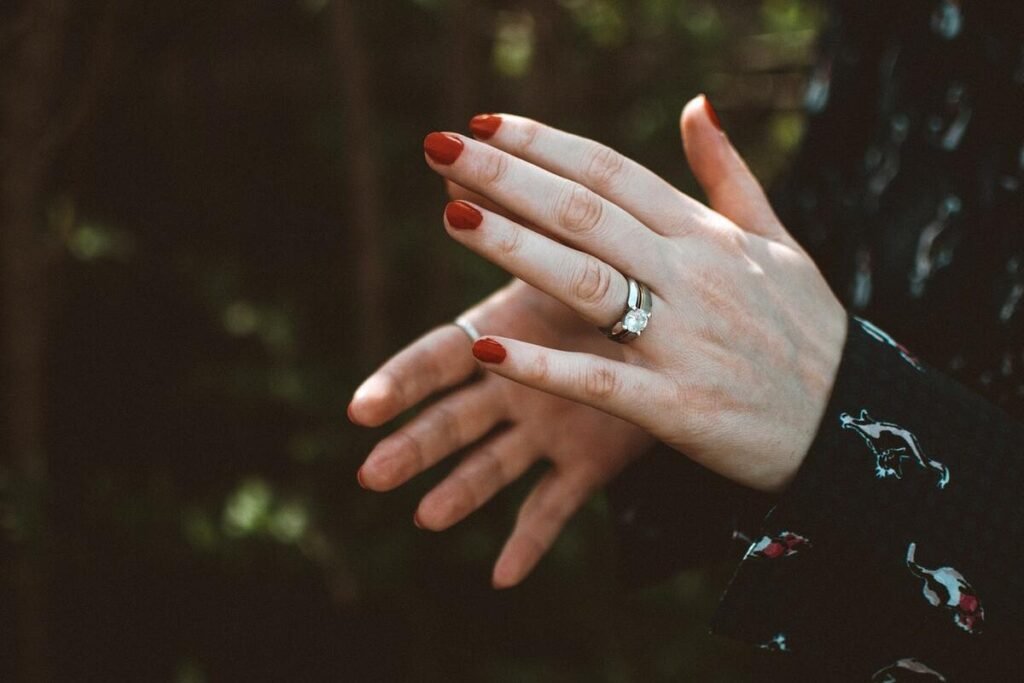
If it’s a matter of emerald cut vs radiant cut moissanite, some jewelers may say that it is similar to comparing with a real radiant cut diamond. Moissanites, when properly cut, can emit the same fire as radiant cut diamonds.
Final comparisons
Additionally, between an emerald cut diamond and an emerald cut moissanite, you may even get better savings. Moissanites tend to have fewer inclusions because of their manufacturing process. Since the emerald cut requires higher quality grades, this can easily make your diamond less expensive than going for real diamonds of both a higher clarity and color. Despite this, the diamond will still have the same expected look.
Radiant and emerald cut diamonds may share a similar shape, but their differences in brilliance and fire may be the make or break point. Choose which one best fits your personality, especially if this will be the stone for a ring you will wear for a long time.
Want to know more about moissanite diamonds for your next emerald cut center stone? Read our guide “Fake or Fine: 8 Ways to Not Get Fooled by Fake Diamonds.”

